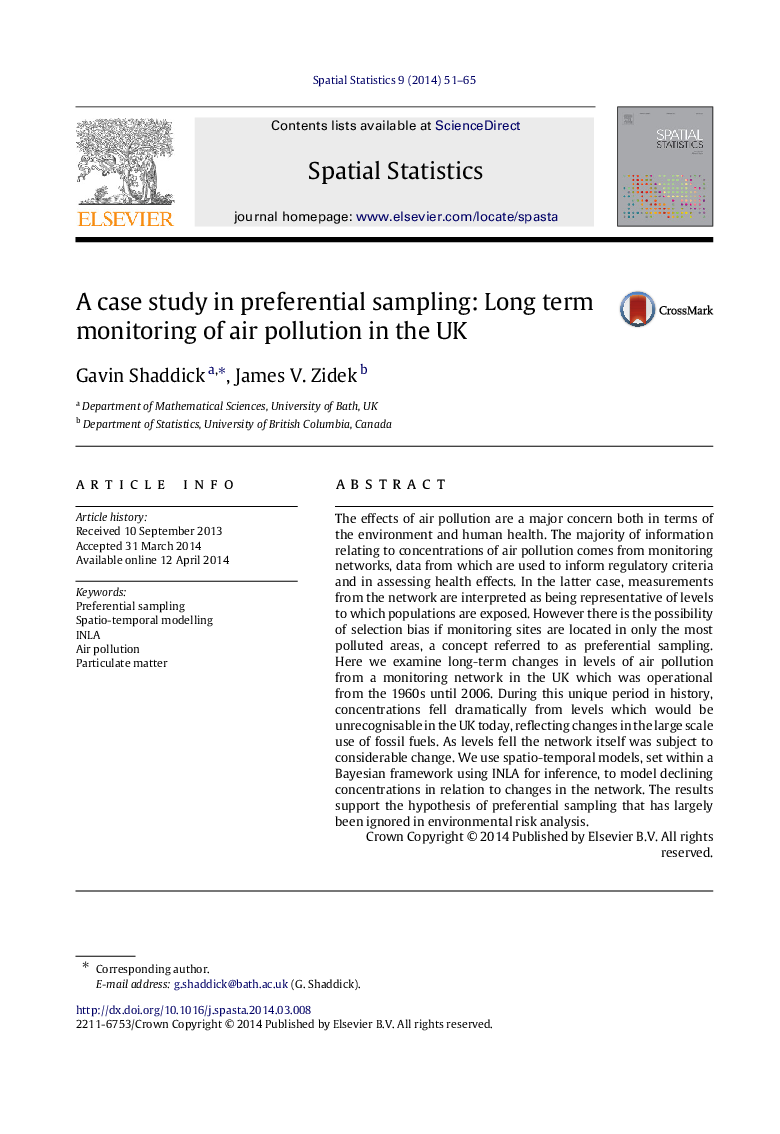| Article ID | Journal | Published Year | Pages | File Type |
|---|---|---|---|---|
| 1064599 | Spatial Statistics | 2014 | 15 Pages |
The effects of air pollution are a major concern both in terms of the environment and human health. The majority of information relating to concentrations of air pollution comes from monitoring networks, data from which are used to inform regulatory criteria and in assessing health effects. In the latter case, measurements from the network are interpreted as being representative of levels to which populations are exposed. However there is the possibility of selection bias if monitoring sites are located in only the most polluted areas, a concept referred to as preferential sampling. Here we examine long-term changes in levels of air pollution from a monitoring network in the UK which was operational from the 1960s until 2006. During this unique period in history, concentrations fell dramatically from levels which would be unrecognisable in the UK today, reflecting changes in the large scale use of fossil fuels. As levels fell the network itself was subject to considerable change. We use spatio-temporal models, set within a Bayesian framework using INLA for inference, to model declining concentrations in relation to changes in the network. The results support the hypothesis of preferential sampling that has largely been ignored in environmental risk analysis.
